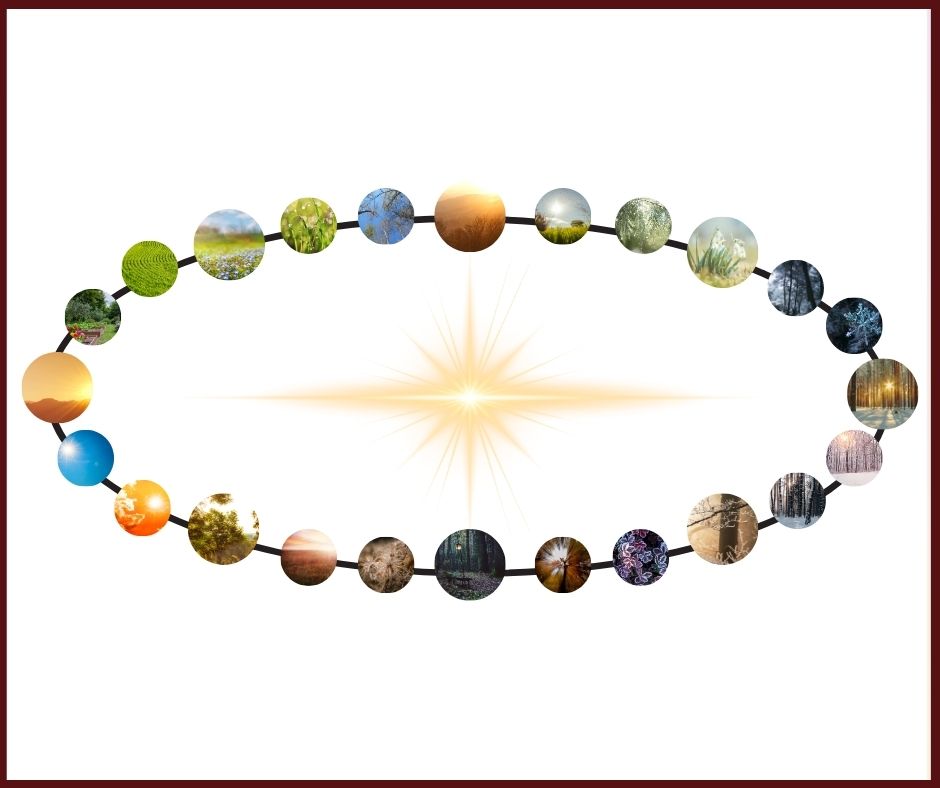As the landscape and climate shift with the changing tides of the seasons, our bodies and minds experience these changes too. Of course, we’ve all sensed these natural transformations that occur during seasonal transition. The lengthening or shortening of days and the fluctuations in weather or climate alter and regulate patterns of plant and animal life on a very fundamental level.
Many earth-based wisdom systems recognize we need to participate with, rather than work against, this natural flow. When we learn to live in harmony with natural seasonal changes we foster greater well-being.
24 Solar Terms or Seasonal Points
Through observation of the natural world, the ancient Chinese created a calendar system that is “lunisolar” meaning it considers both the movements of the sun (solar) and the moon (lunar).
In this post, we’re going to explore the solar points which represent the entire circle of the sun. The solar terms divide the calendar into 24 total segments (12 pairs of major nodes and 12 minor nodes). These 24 unique segments of time are called Jie Qi or “seasonal points / solar terms”.
When comparing this calendar with dates on the Gregorian calendar there can be minor differences within one or two days every year. So keep in mind that every year the solar term dates may change slightly when compared to the Gregorian date.
Each seasonal point is approximately two weeks. You can think of these solar terms as mini-seasons.
Solar terms or seasonal points reflect climatic changes happening as the sun moves in its annual circular motion. In particular, this calendar was used in ancient times to support farm and agricultural work. Today it still holds an important place in guiding everyday rituals and routines in China and many other East Asian countries.
24 Solar Terms and Chinese Medicine (TCM)
Chinese Medicine (TCM) emphasizes the need to alter our behaviour based on the external environment to maintain health and vitality and avoid disease. So we can use the solar terms as guideposts when harmonizing our diet and lifestyle choices to match the natural world.
Learn more about the solar terms and ways you can take care of yourself during each season below:
The First 4 Solar Terms or Seasonal Points
When dividing the calendar into solar terms, first we divide time into 4 periods (of three months each). These time periods reflect the altitude of the sun:
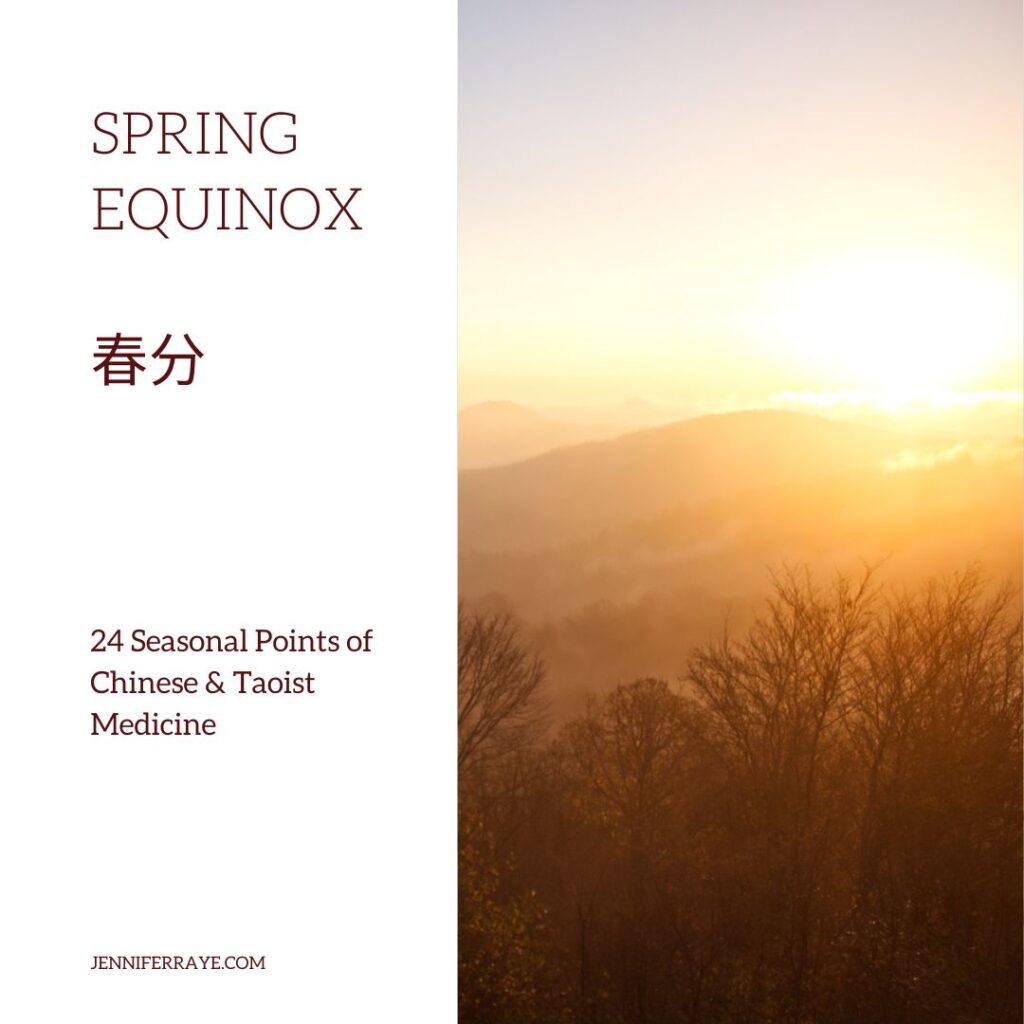
The Spring/Vernal Equinox – Mar.20th – April 3rd 2024
During this solar term, yin and yang are briefly balanced. From now on, yang will grow and yin will decline. This time of renewal is symbolized by the wood element – think of green shoots/buds emerging after winter. This is when we can slough off the old and outworn and embrace new growth.
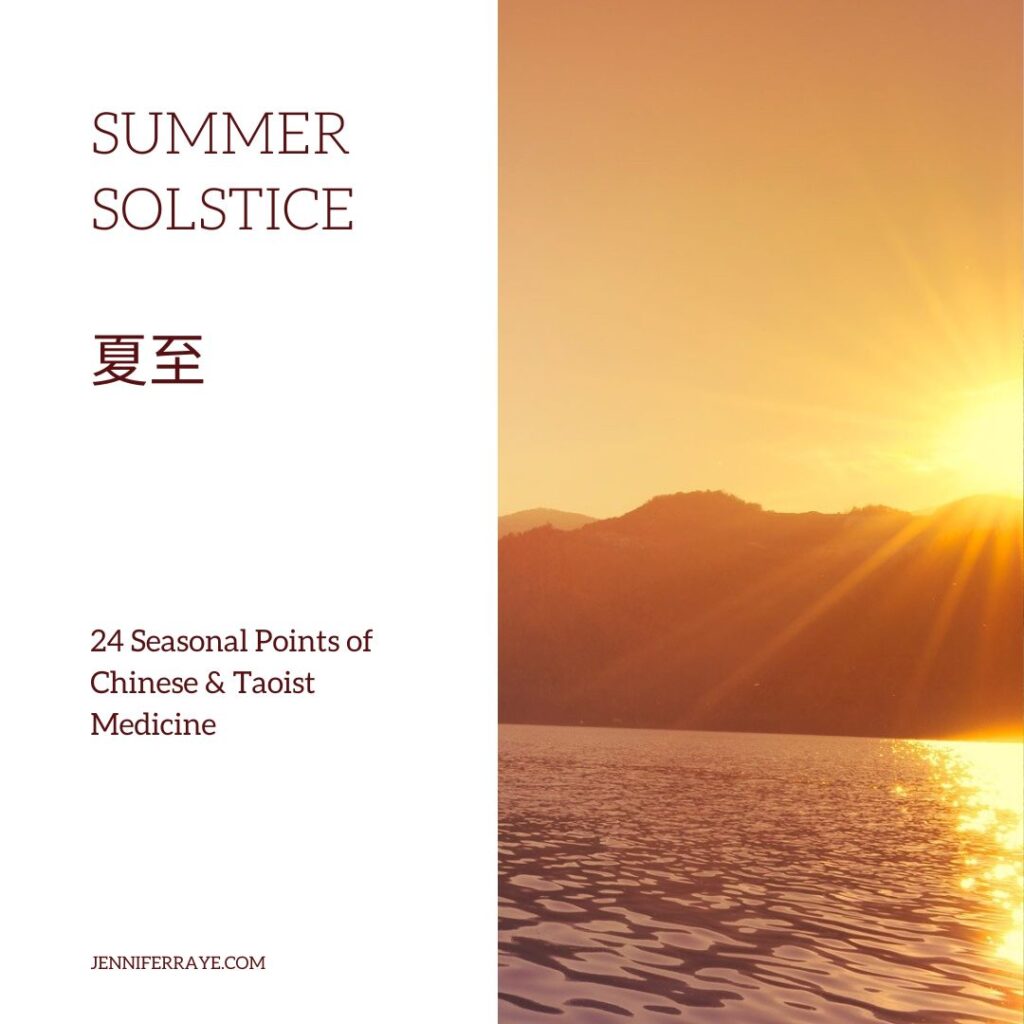
The Summer Solstice – June 21st – July 5th 2024
We have the longest days and shortest nights in this period. Yang is now expanding and growing. The summer season is represented as the fire element which relates to expansion – think of the bright energy of the sun and how it fuels celebration and activity – it’s a great time to connect with others and play outside.
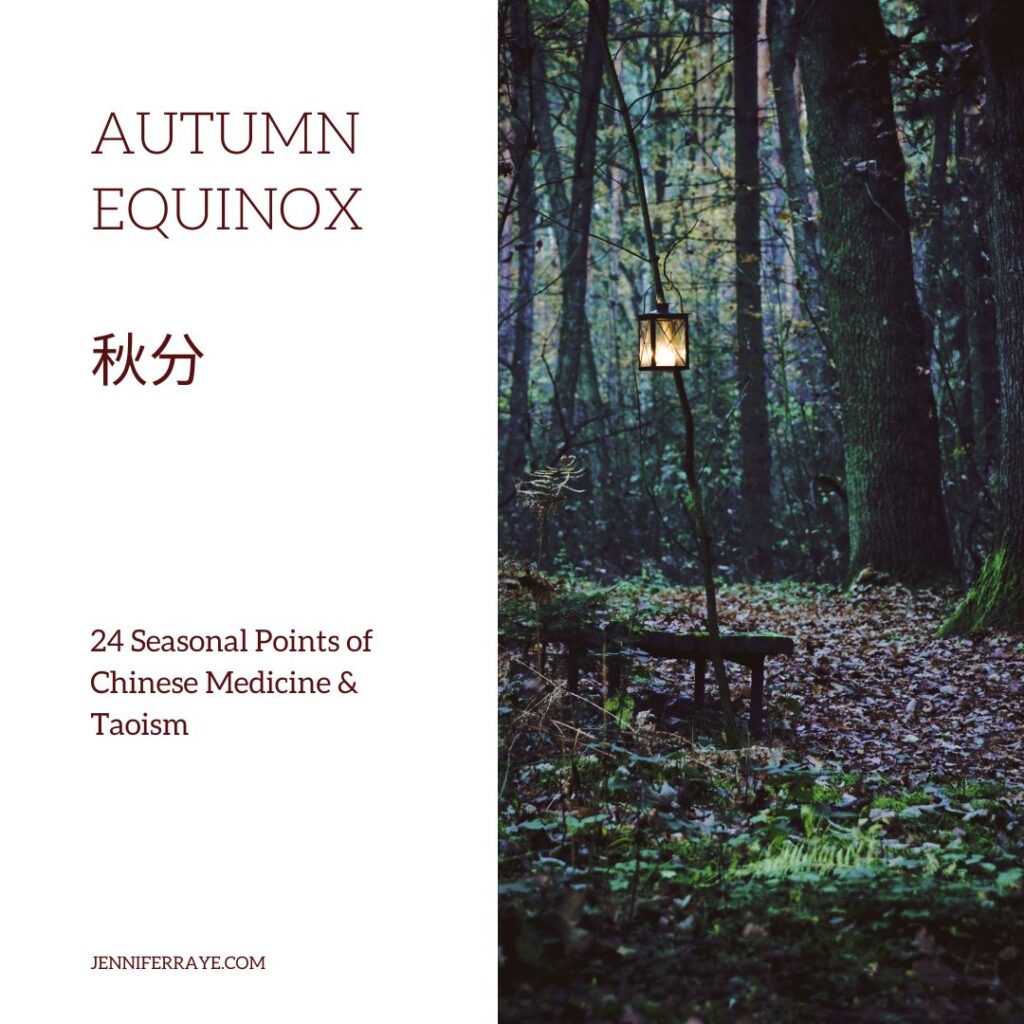
The Autumn Equinox – Sept.22nd – Oct.7th 2024
During this solar term, we begin our slow descent into darkness and decay. It is when energy moves from yang to yin. Represented as the metal element, this solar term is a time to release and simplify. As energy continues to cool, contract, and descend you may feel a desire to pare down and slow down too.
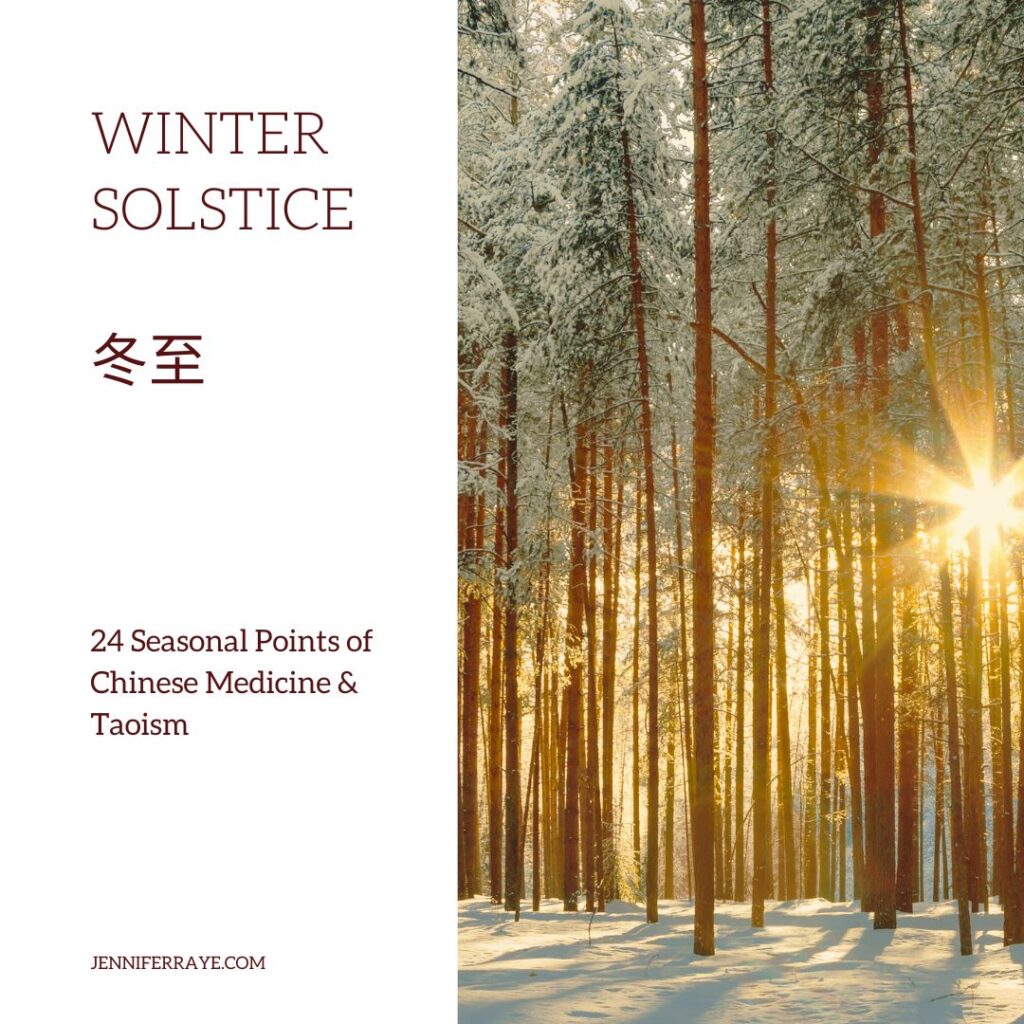
The Winter Solstice – Dec.21st – Jan.4th 2024
This is the solar term with the darkest days of the year. The quiet hush of winter helps us cultivate wisdom through receptivity and reflection. Depicted as the water element, it can show us there is real potency available in darkness. This time of stillness and slowing down helps us protect and connect with the deep life forces within.
The Next 4 Solar Terms or Seasonal Points
Then, the calendar is further divided into eight periods which include the above solar terms plus the four below. These terms consider natural phenomena like climate and changes in the land:
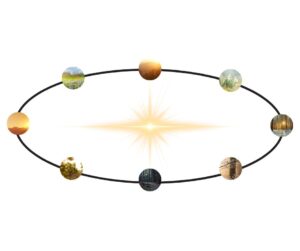 Start of Spring – Feb.4th-Feb.18th 2024
Start of Spring – Feb.4th-Feb.18th 2024
Start of Summer – May 5th- May 19th 2024
Start of Autumn – Aug.7th – Aug.21st 2024
Start of Winter – Nov.7th – Nov.21st 2024
(If you want to learn more about these solar terms refer to the links at the bottom of this post).
Complete List of 24 Solar Terms or Seasonal Points for 2024
Finally, the rest of the solar terms (to a total of 24) are added. These terms highlight events like the harvest of crops, insect activity, frost, snowfall, precipitation, and dew. Most of these solar terms were likely created and mapped in the Western Han Dynasty (206 BC–24 AD), so most of the references to weather refer to the climate of Xi’an, a city in Northern China which was the capital of the Han Dynasty. Because of this, we need to alter recommendations depending on the actual climate where we live, but these solar terms still provide a very helpful outline.
Here is a complete list of the Solar Terms or Seasonal Points for 2024:
SPRING (Learn more about the spring seasonal points here.)
- Beginning of Spring 立春 – Feb.4th
- Rain Water 雨水 – Feb.19th
- Insects Awakening 惊蛰 – Mar.5th
- Vernal Equinox 春分 – Mar.20th
- Clear and Bright 清明 – April 4th
- Grain Rain 谷雨 – April 19th
SUMMER
- Beginning of Summer 立夏 – May 5th
- Lesser Fullness 小满 – May 20th
- Grain in Ear 芒种 – June 5th
- Summer Solstice 夏至 – June 21st
- Lesser Heat 小暑 – July 6th
- Greater Heat 大暑 – July 22nd
FALL / AUTUMN
- Beginning of Autumn 立秋 – Aug.7th
- End of Heat 处暑 – Aug.22nd
- White Dew 白露 – Sept.7th
- Autumnal Equinox 秋分 – Sept.22nd
- Cold Dew 寒露 – Oct.8th
- Frost Descent 霜降 – Oct.23rd
WINTER (Learn more about the winter seasonal points here.)
- Beginning of Winter 立冬 – Nov.7th
- Light Snow 小雪 – Nov.22nd
- Greater Snow 大雪 – Dec.6th
- Winter Solstice 冬至 – Dec.21st
- Lesser Cold 小寒 – Jan.5th
- Greater Cold 大寒 – Jan.20th
Learn More about the Seasonal Points
To learn more about the individual solar terms you can find each seasonal point described separately here:
Solar Terms and Seasonal Points for Winter
Solar Terms and Seasonal Points for Spring
Solar Terms and Seasonal Points for Summer – coming soon!
Solar Terms and Seasonal Points for Fall – coming soon!
I hope you found this helpful! Make sure to join the mailing list here to follow along with the seasonal points all year long.

